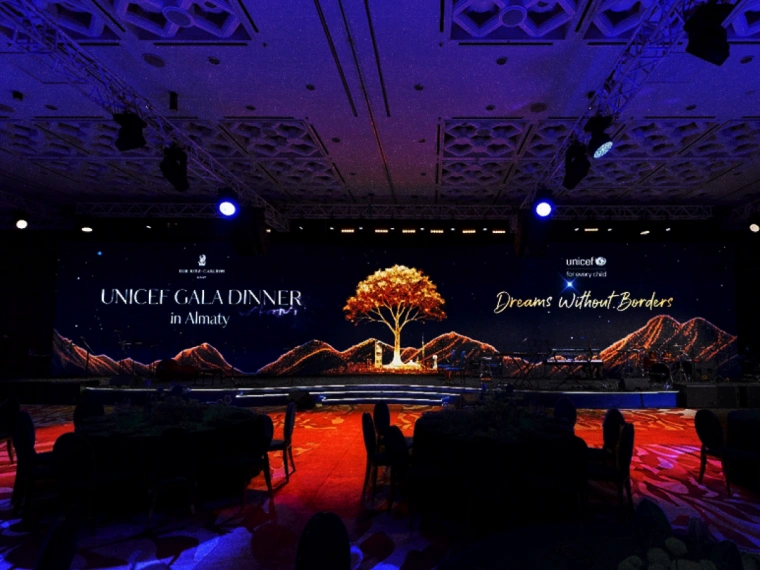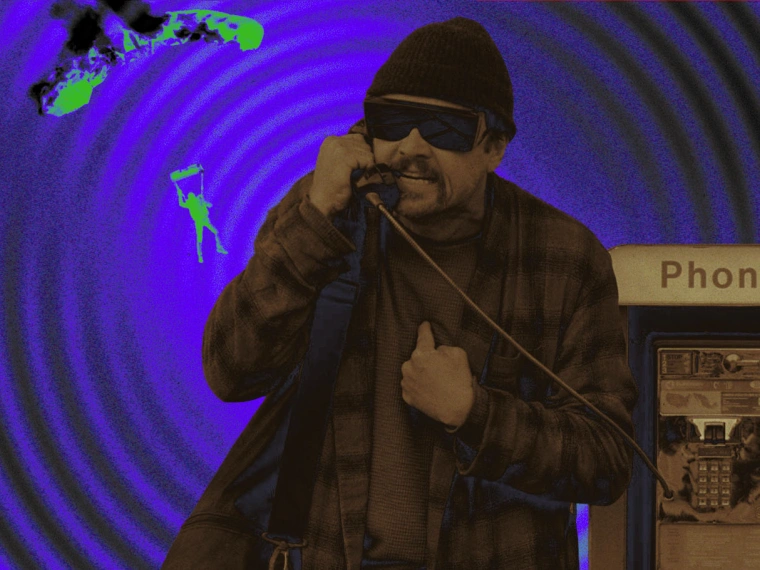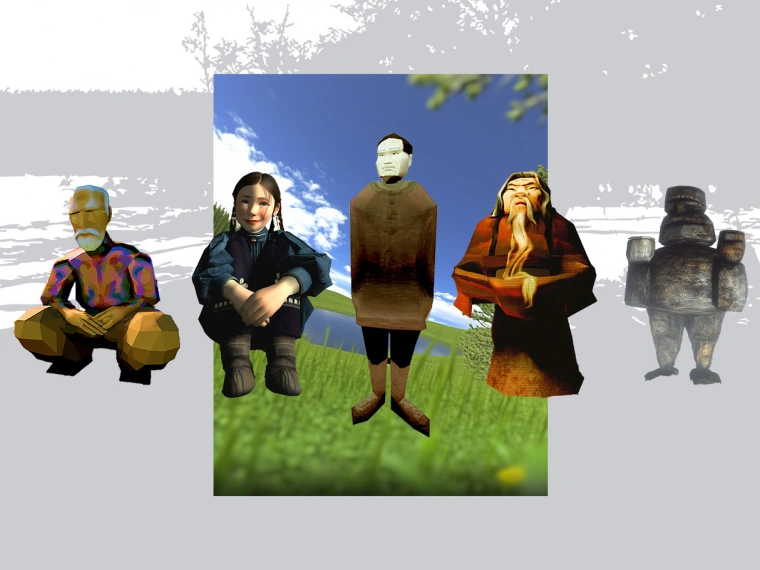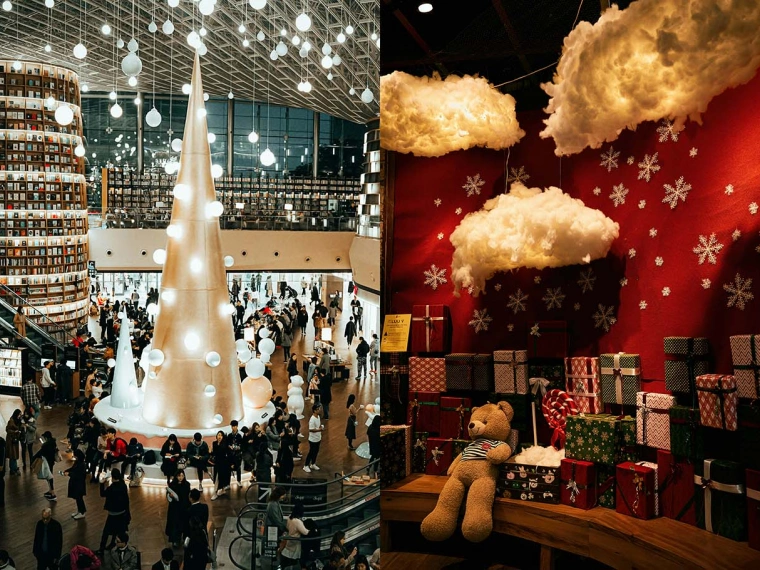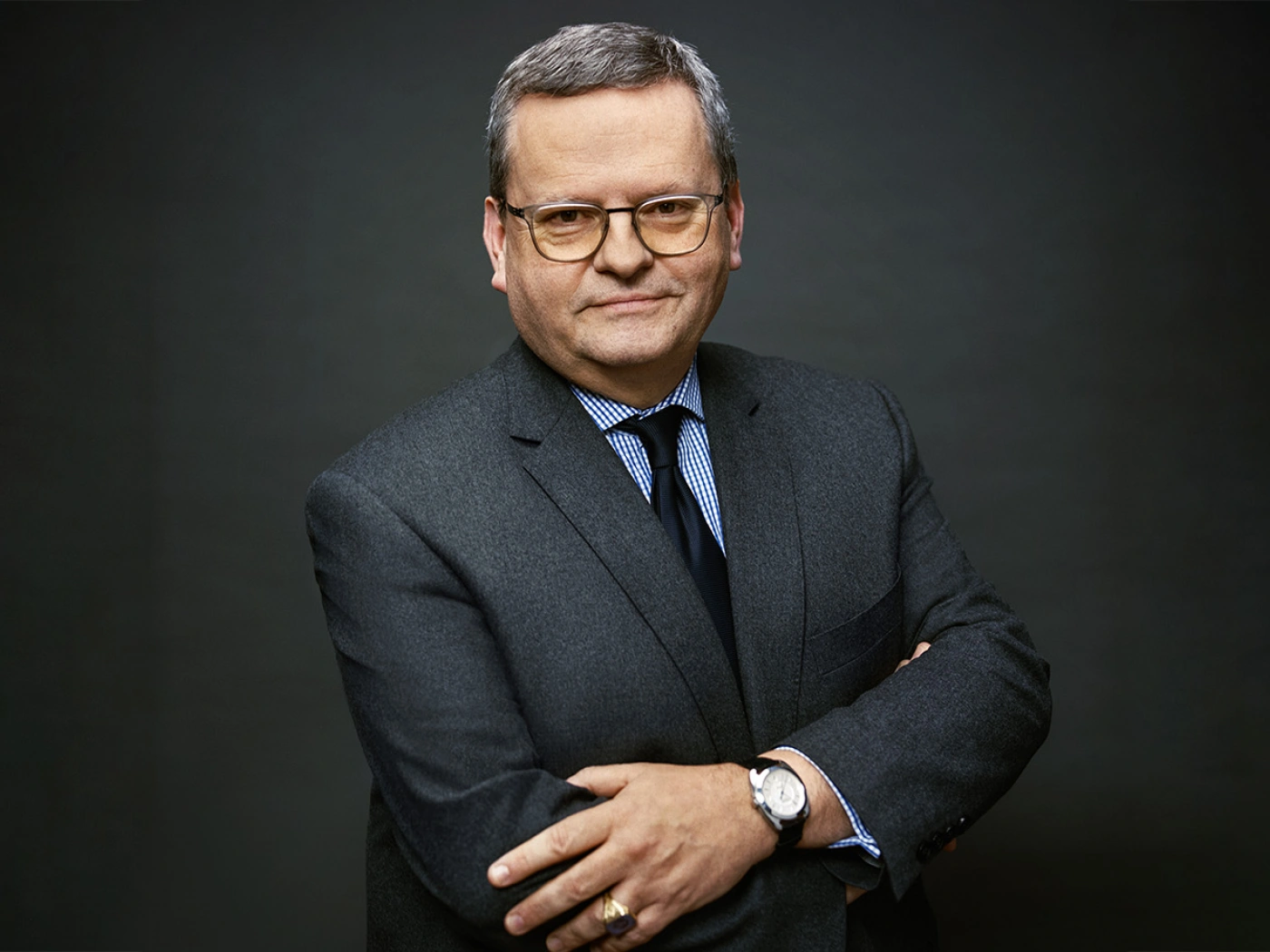
«Helping artists thrive is the core mission» — Olivier Fournier talks Hermès craftsmanship and creativity
Hermès brought its traveling exhibition Hermès in the Making to Istanbul this October, opening its workshops to the public.
On this occasion, STEPPE founder and CEO Zaure Rozmat spoke with Olivier Fournier, Executive Vice President corporate development and social affairs and president of the Fondation d’entreprise Hermès, about the philosophy of craftsmanship, the training of artisans, and the ways Hermès supports creativity.
The exhibition invites visitors to discover how Hermès crafts objects designed to last, be repaired, and passed down through generations. Since the house’s founding in 1837, six generations of artisans have preserved and evolved this living heritage of craftsmanship.
In Istanbul, artisans from nearly ten of Hermès’ métiers offered a rare look into their savoir-faire — a blend of tradition, quality, innovation, and respect for materials and the environment.
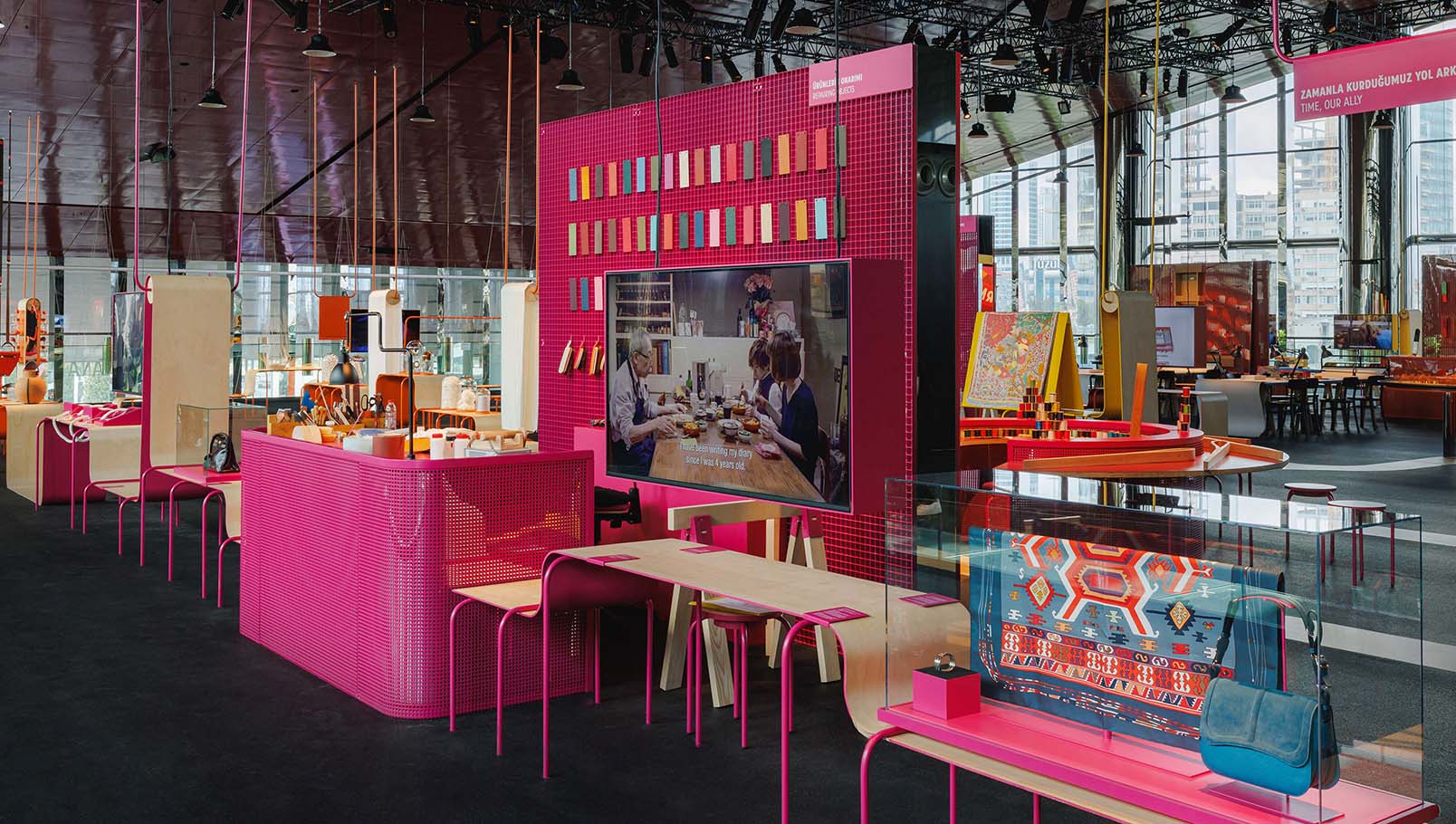
— The exhibition In the Making highlights artisans, materials, and craft techniques. Why did Hermès choose to place craftsmanship at the center of this public conversation?
It’s part of our DNA. When Hermès was founded in 1837, Thierry Hermès was a craftsman making leather harnesses in Paris. That origin has always shaped who we are.
That’s why craftsmanship remains essential for us. Hermès in the Making, which has now been held in more than a dozen cities — in fact, this is the 14th edition — is our way of showing that this tradition is not frozen in time or staged for display.
It’s a living activity — full of life. Our artisans work every day in the workshops, and we continue to open new ones across France. We just opened a new leather workshop last week in the southwest at l’Isle d’Espagnac. For us, it’s also a way to show that craftsmanship is not something old-fashioned or reserved for museums, but something modern and alive.
— The exhibition travels to cities closely connected with industry, manufacturing, and craftsmanship. Why is it important for you to hold this dialogue in such places — and how does the exhibition engage with each local context?
The decision is made together with our local teams. If the local management feels it’s the right time and place, we bring the exhibition. It’s a way to broaden our audience, since it’s open to the public, and to show Hermès beyond the store — to take people behind the curtain, into the workshop, to see what happens every day.
And of course, there’s a logic in coming to Istanbul. Turkey has a long tradition of craftsmanship — carpets, tiles, wood carving, textiles. That history resonates with what we do at Hermès, so the dialogue feels natural here.
— You often speak of craftsmanship as a philosophy. Why is it so essential for Hermès to work with natural leather and to produce each bag by hand?
It’s a question of respect and authenticity — respect for the materials, for the people who make the objects, and for the customers who buy them.
First, it’s about respect, and then authenticity. What you can see here is exactly what happens in our workshops. It is not a marketing approach, we just show the reality. This authenticity is part of the DNA of Hermès. Each bag is signed by the craftsman who makes it, with a personal signature inside the bag.
I think our objects have a supplement of soul, because they are made by hand, by people, not by machines. There’s this strong connection between our craftsmen and our customers through the objects. The object becomes a link between the craftsman and the customer. And that’s what you feel when you see this exhibition — all the work, the training, the time it takes to make and to stitch everything by hand.
— Hermès consistently invests in training the next generation of artisans. How do you transmit this expertise, and why does it matter so much today?
If we are here today, it’s because generations before us did the same. Transmission is part of the history of craftsmanship — and of Hermès itself. It’s not only about the Hermès family; many families work within the house, passing their know-how from one generation to the next. To stay authentic, it’s essential to transmit skills.
Older craftsmen often say, «I’ve learned every day of my life at Hermès». Every day is a new day — like a cook in a restaurant, starting fresh. The leather changes, the color, the model, the climate — so every day is new training.
That’s why we live in this rhythm of learning and transmitting. It’s a virtuous circle — a beautiful one. And today, many people, especially the young, want to work with their hands again. There are two directions: one digital, one coming back to reality — to something more sincere, more human, that has soul.
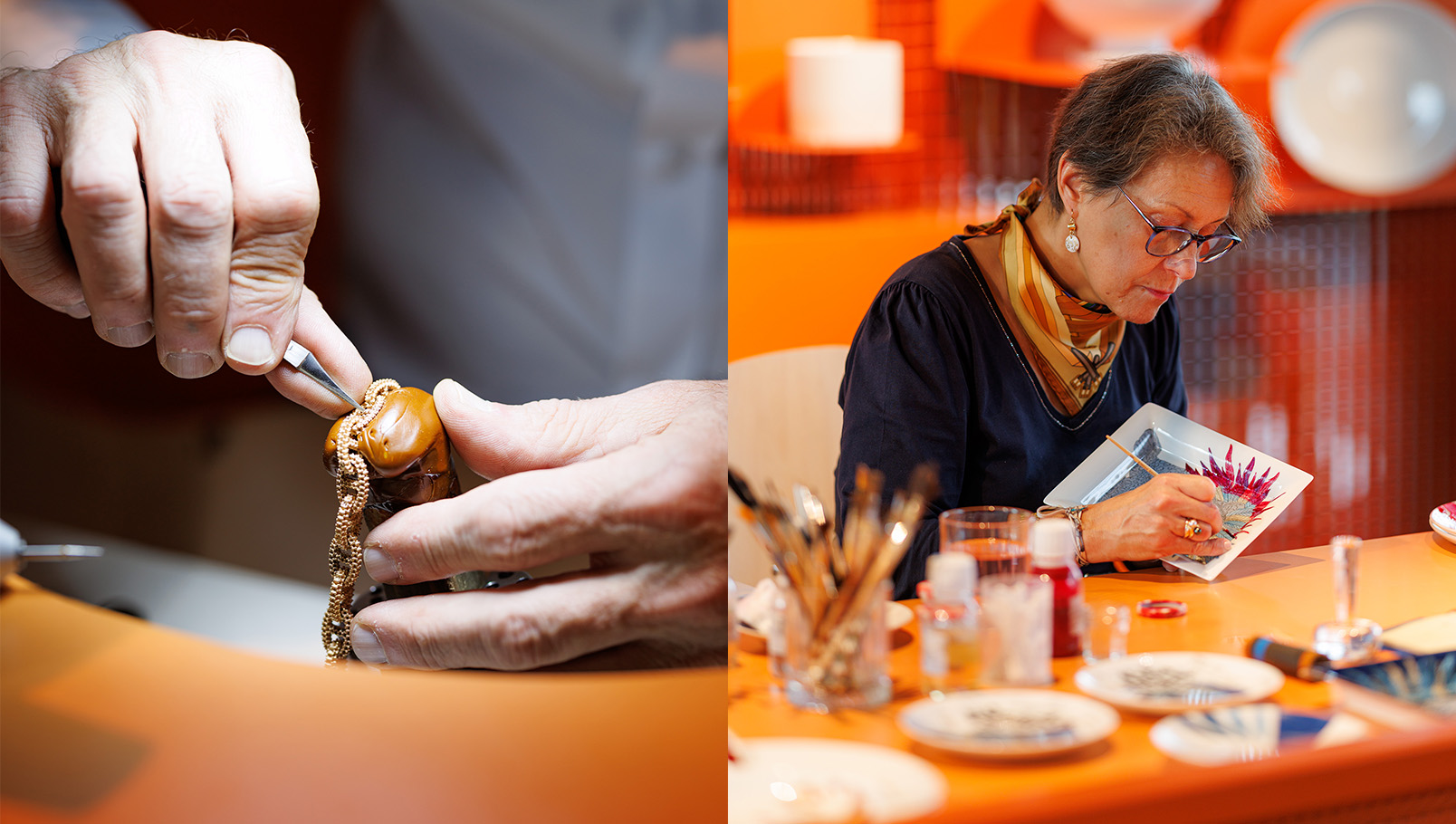
— We see that you also embrace innovation — from biotechnological materials to upcycling. How do you strike a balance between tradition and new technologies?
We should never oppose tradition and innovation — innovation is at the service of tradition. Take silk printing: in the exhibition you see it done by hand, but in the workshops we also use modern technologies. They are not there to replace the craft, but to serve quality and creation.
Innovation, in that sense, improves what has been built by tradition. It’s not an opposition — it’s a complement. It also helps us prepare for the future.
And innovation is not always something entirely new. Sometimes it means reusing a material in a different way. Our toile H canvas, for example, originally came from the hoses used by firefighters — the same material, just given a new life. We love that kind of transformation.
Of course, we also explore new materials and biomaterials. But quality always comes first — it’s an obsession at Hermès. Any new material must match the natural ones we use today, with the same durability, feel, and capacity to age beautifully.
Sometimes it takes time, but time is a friend at Hermès — and patience is part of our craft.
— Hermès is known for creating long-lasting objects. How does this value of durability influence your approach to design, materials, and production?
It comes down to commitment. Every artisan, whether making a bag, a watch, or a porcelain piece, invests personal care into their work. When you spend 18 hours making a single bag, it’s a long time; it’s a strong commitment.
In our workshop in Franche-Comté, I once saw a group of young artisans finishing their first Kelly bags — ten black leather bags placed side by side on a shelf. Without touching them, each craftsman could immediately recognize their own. No mistakes.
For me, they all looked identical. But that moment showed the true power of craftsmanship — the precision, the pride, and the human connection that define Hermès.
— The Fondation d’entreprise Hermès supports artists, designers, theaters, photographers, and environmentalists. Why is it important for a luxury brand to have a foundation and engage in cultural patronage?
For us, supporting contemporary creation is part of who we are. Creation keeps us connected to the world. Without it, we lose ideas for the future. Sometimes it confronts us with strong or even very different ideas, but that’s what helps us think differently and move forward.
That’s why the Fondation supports painters, sculptors, and photographers, as well as the performing arts — from modern dance and theatre to the circus and even puppetry. In France, we have a wonderful school that trains young artists in puppet making — another way of keeping this creative energy alive.
— Hermès runs four art spaces in Brussels, Tokyo, Seoul, and France. These venues don’t just exhibit art — they help create it from scratch. Why is it so important for the Foundation to accompany artists throughout the entire process, from concept to production?
For us, it’s about creating the conditions for artists to succeed. Whether in visual arts, photography, or performing arts like modern dance, theater, and puppetry, the Fondation supports creators from the very first sketch to the finished work. That guidance doesn’t end with creation — it also helps their work reach audiences through exhibitions, galleries, or theater tours.
Supporting artists in this way is about more than prestige or building a private collection. It’s about giving creators the space, resources, and visibility to develop ideas and share them widely. For example, we’ll soon celebrate an African photographer from the Ivory Coast with a major exhibition in Paris — bringing light to work that might otherwise go unseen.
It’s a long journey, sometimes with young or experienced artists alike, but it’s one that builds connection, trust, and results. Helping artists thrive — from concept to audience — is the core mission of the Fondation.
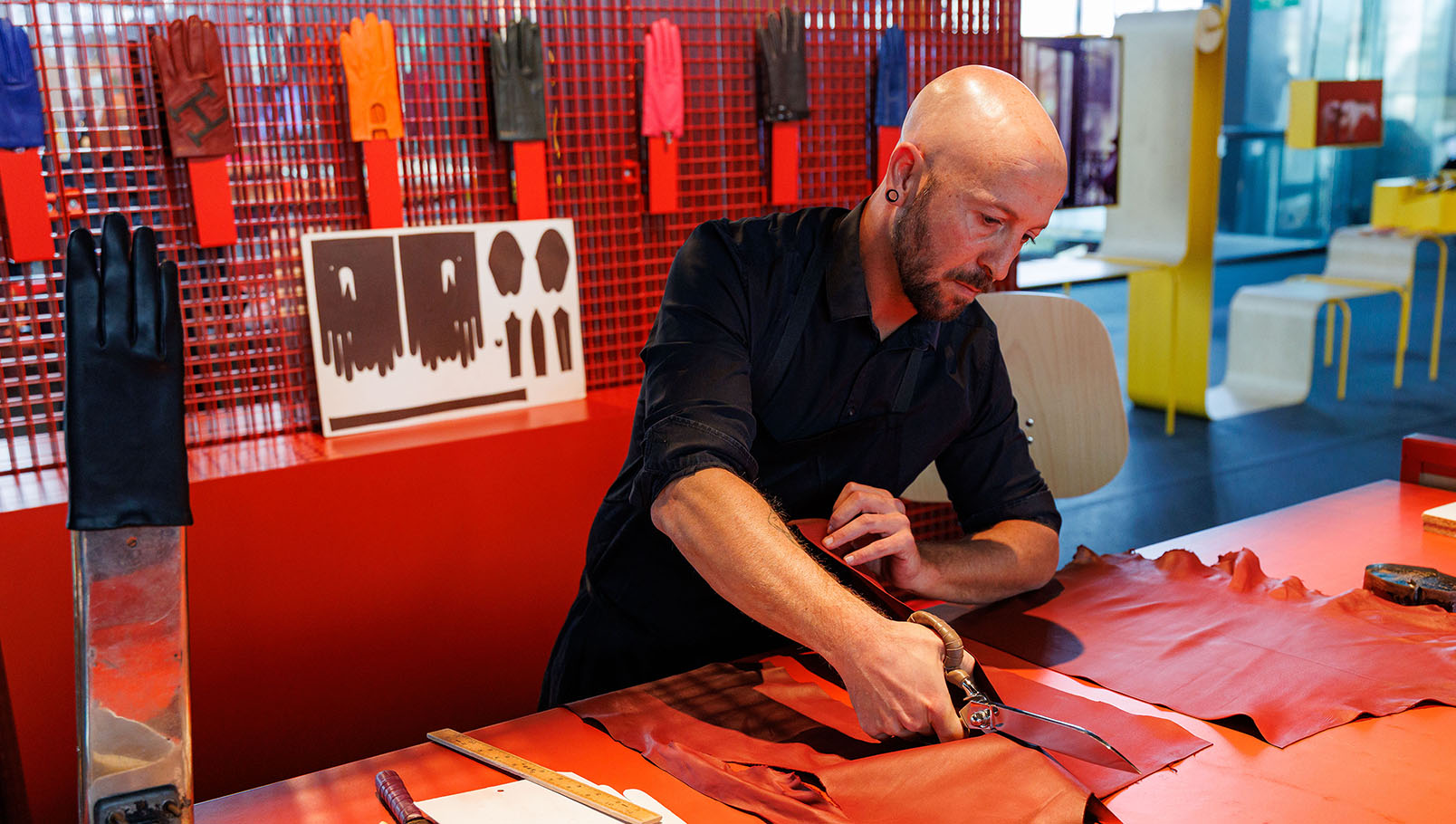
— What goes into choosing and preparing the craftsmen behind Hermès objects?
Most artisans come from different professional backgrounds and often have no prior experience with this kind of work. We assess candidates using a method called méthode de recrutement par simulation, which tests precision, concentration, and manual skill.
We balance hard skills — the ability to work with hands — with soft skills, making sure the person can thrive in a collaborative workshop environment. Once selected, they enter an 18-month training program, with regular evaluations along the way. About 80% complete the full program.
It’s a rigorous process, but it reflects the philosophy behind Hermès: every product carries the skill, dedication, and care of the artisan who made it.
Photo: Alexandre Guirkinger
